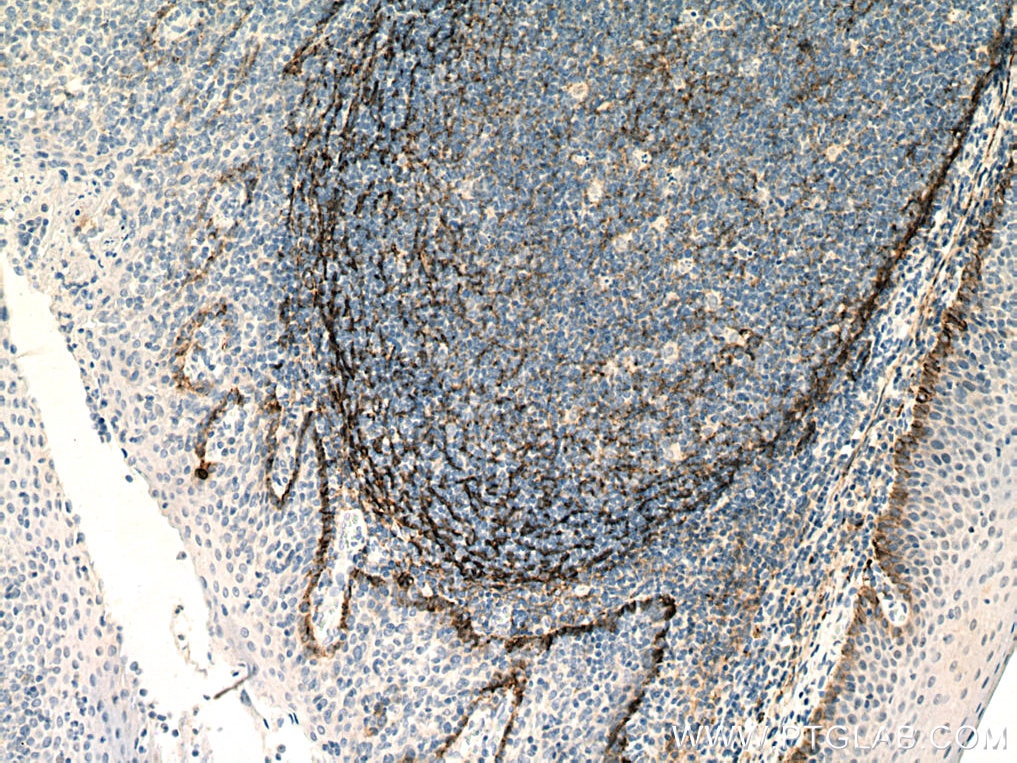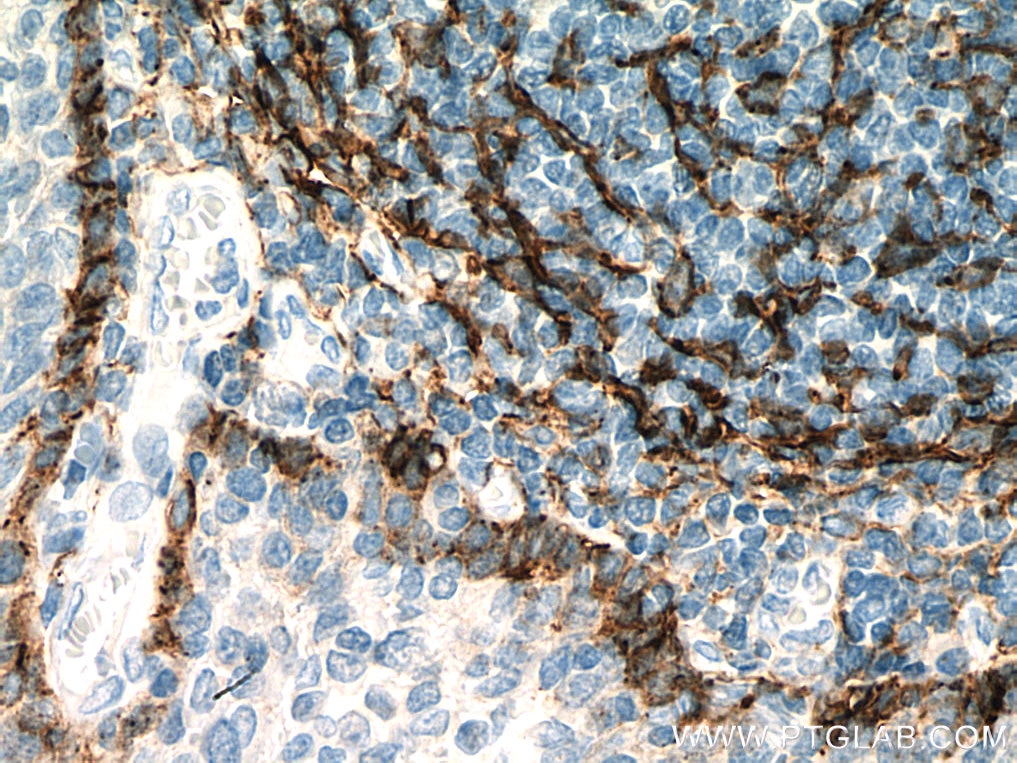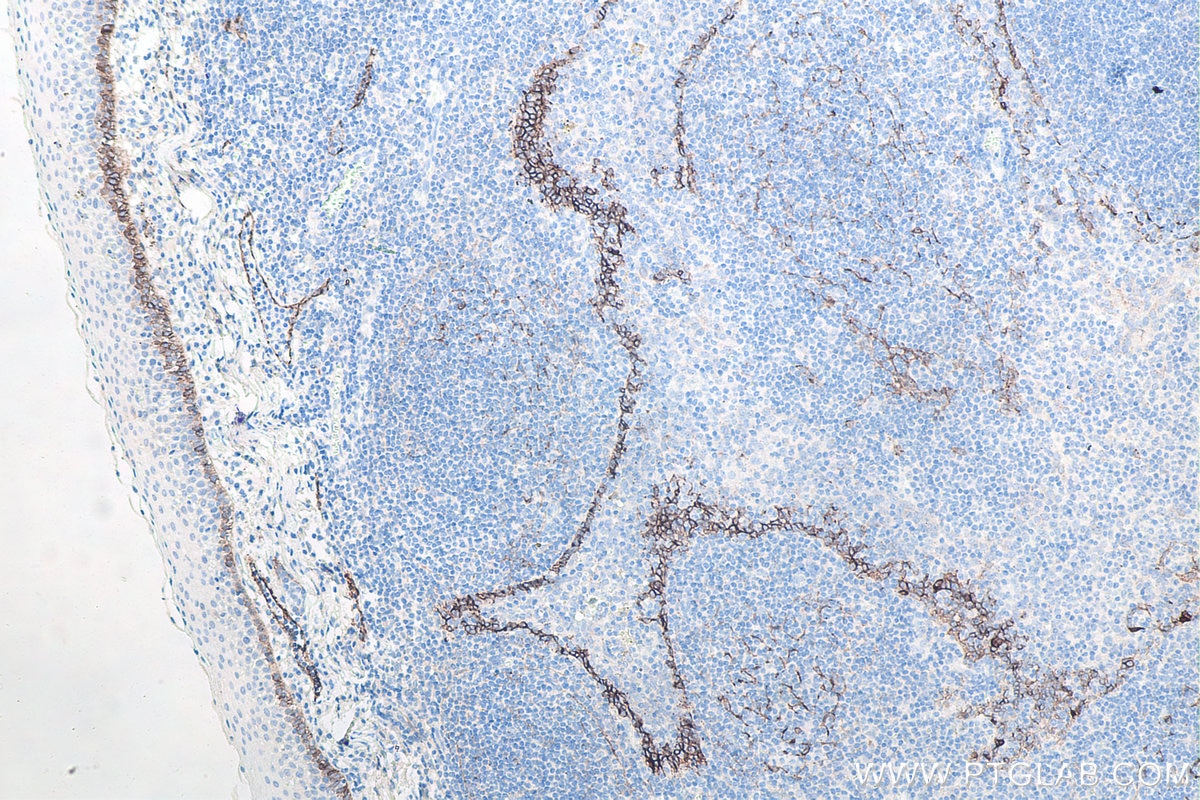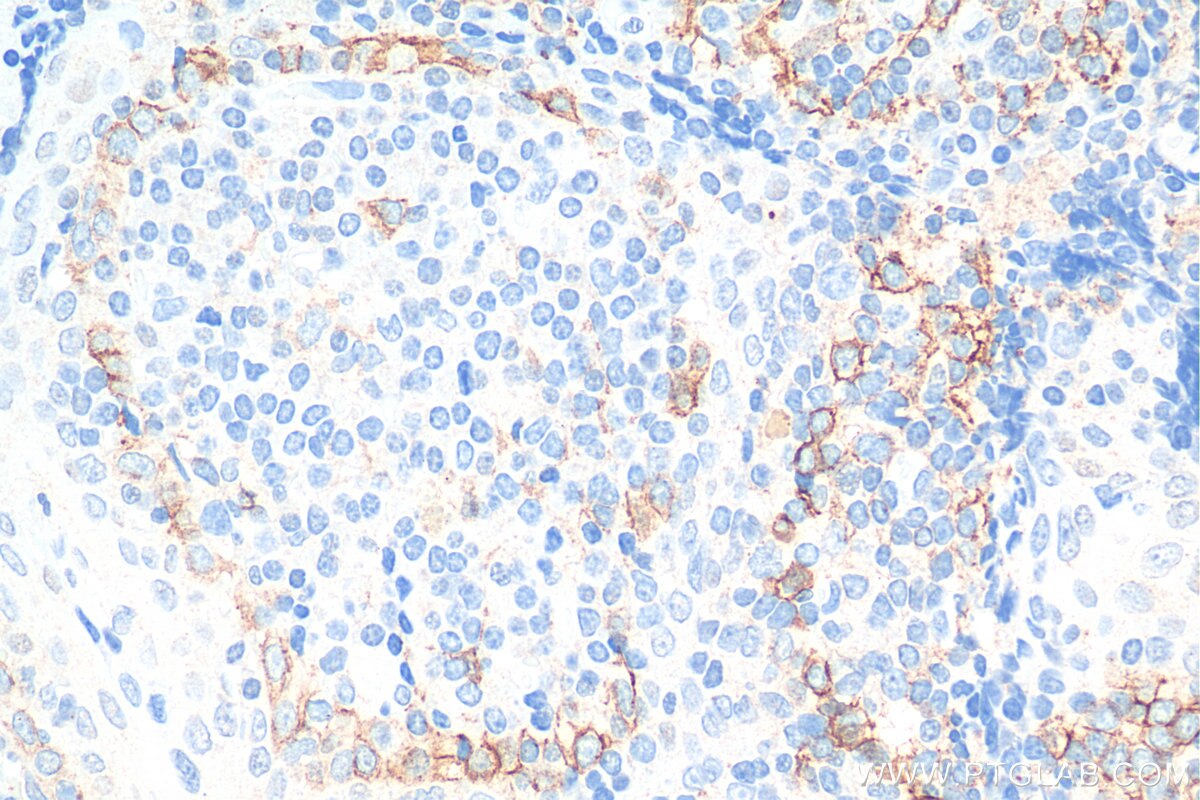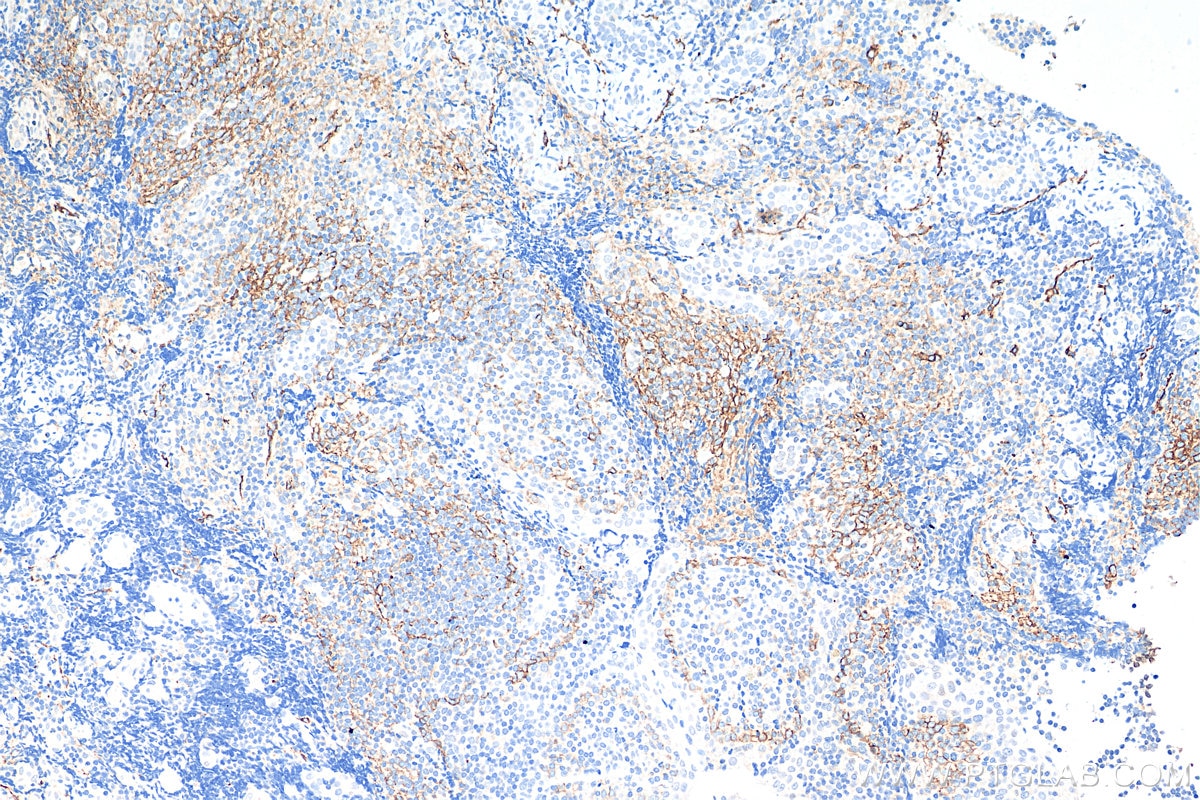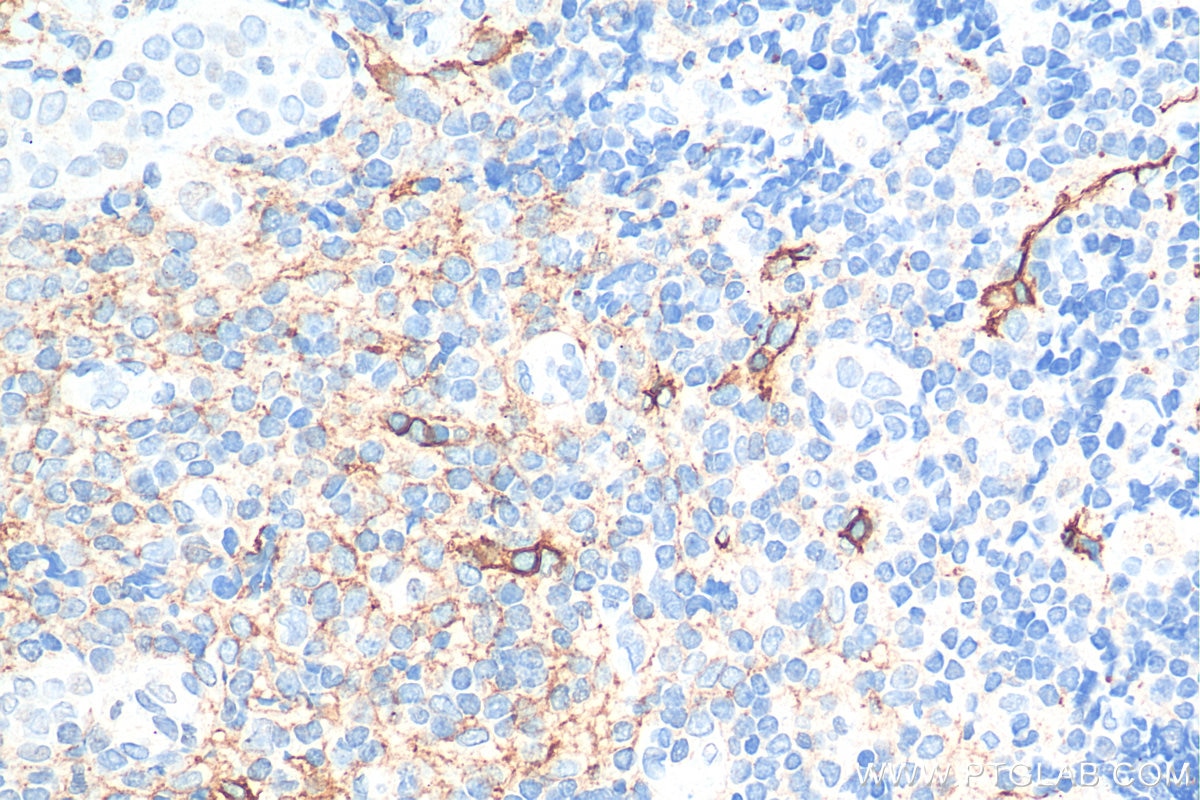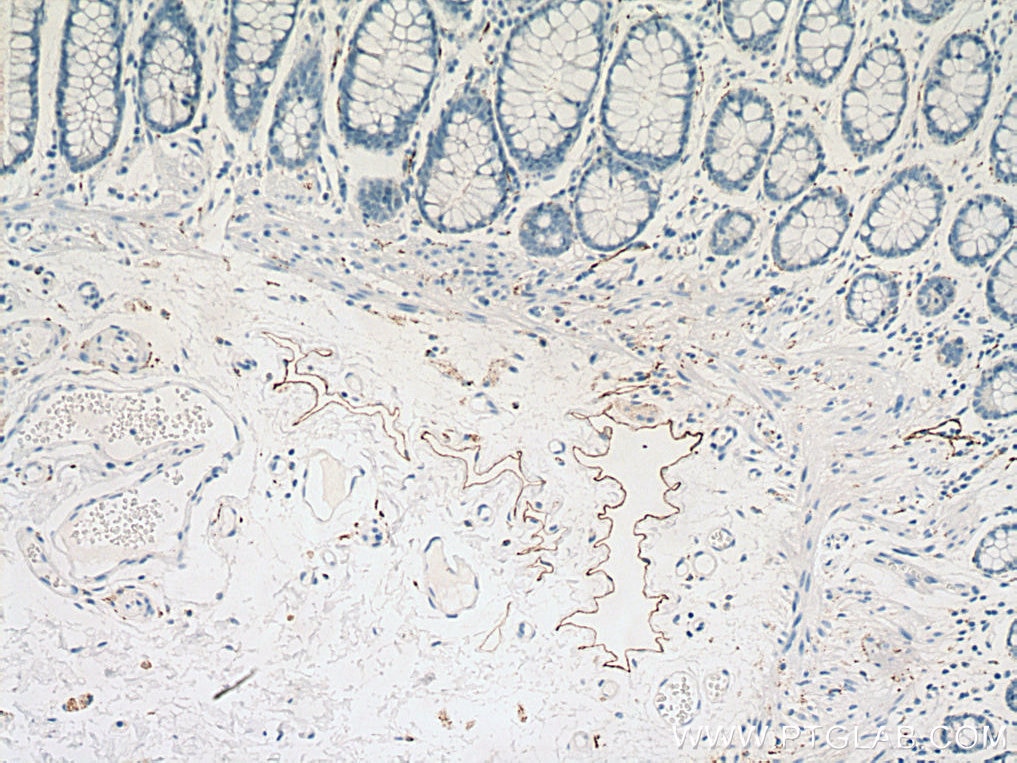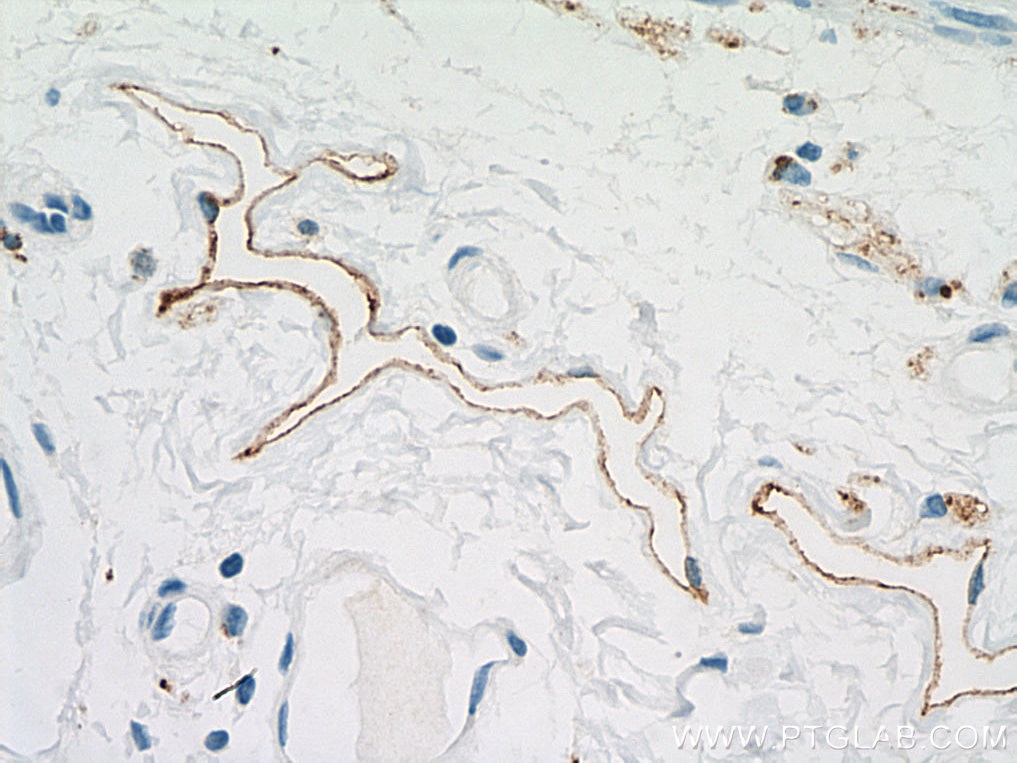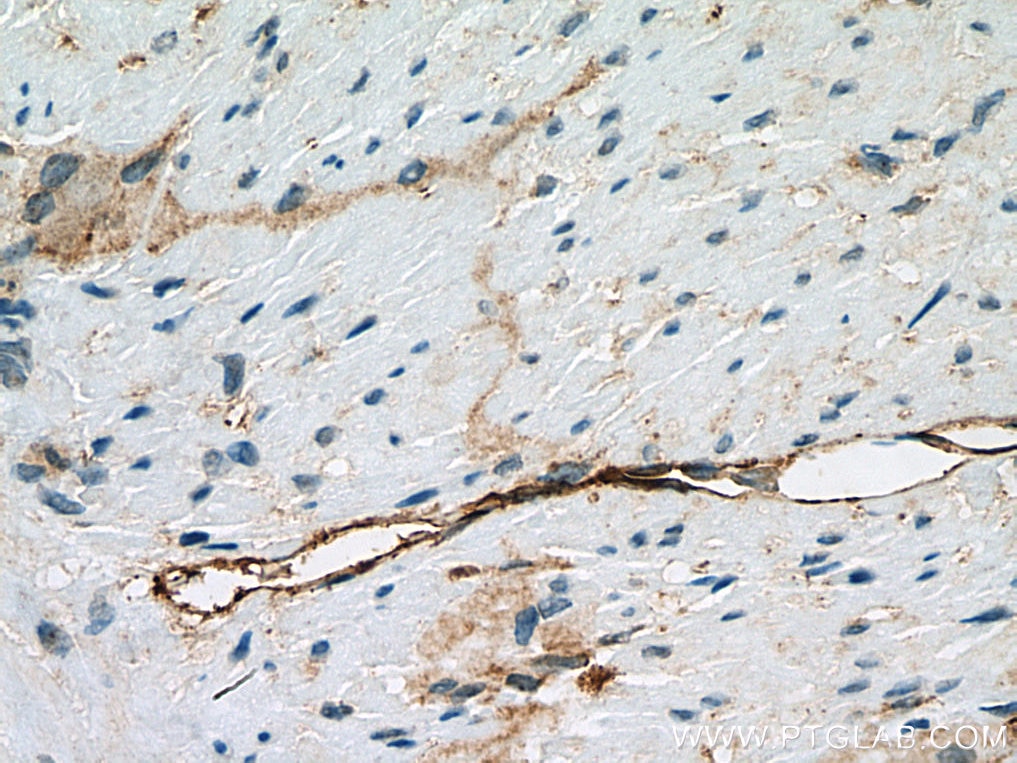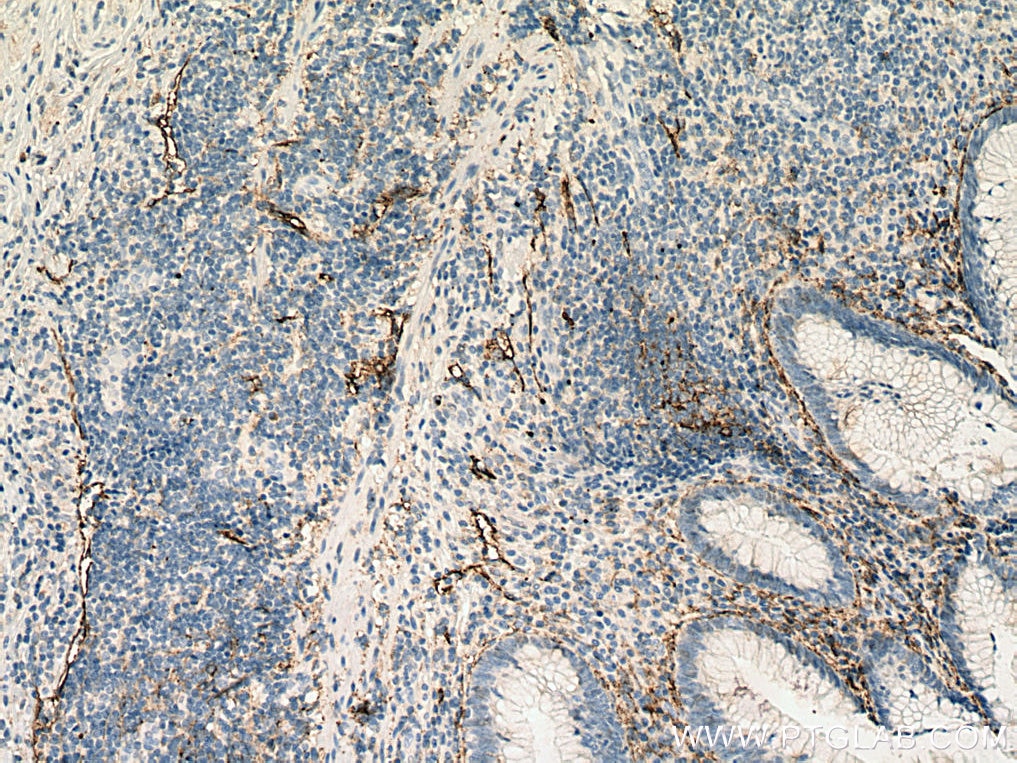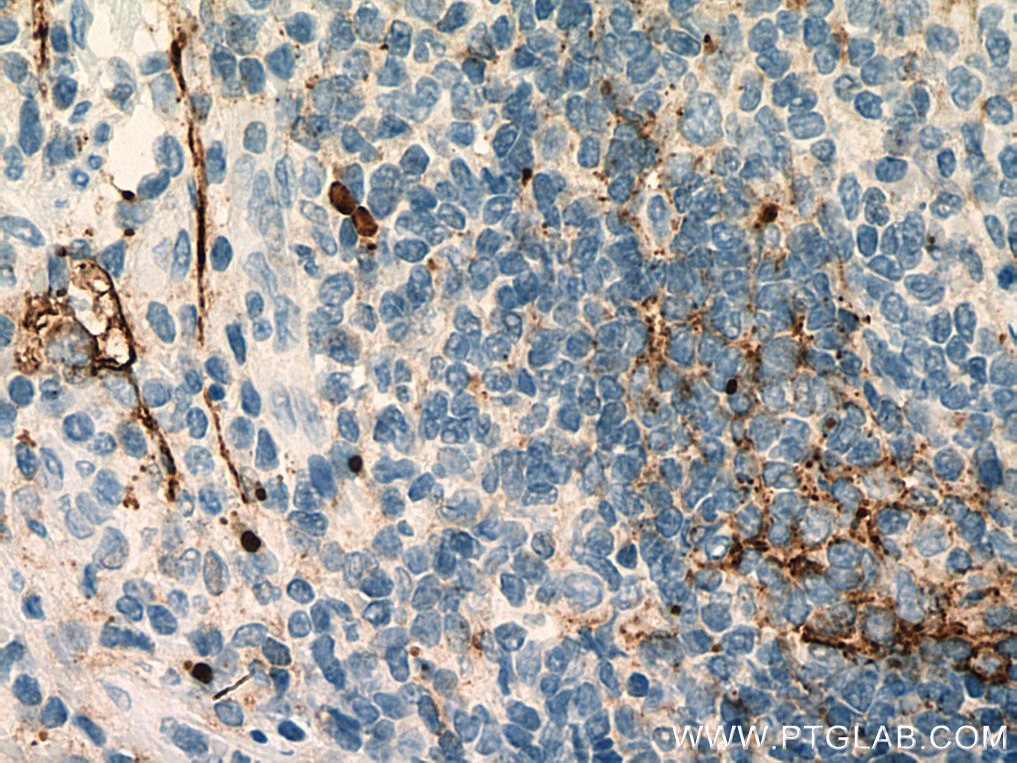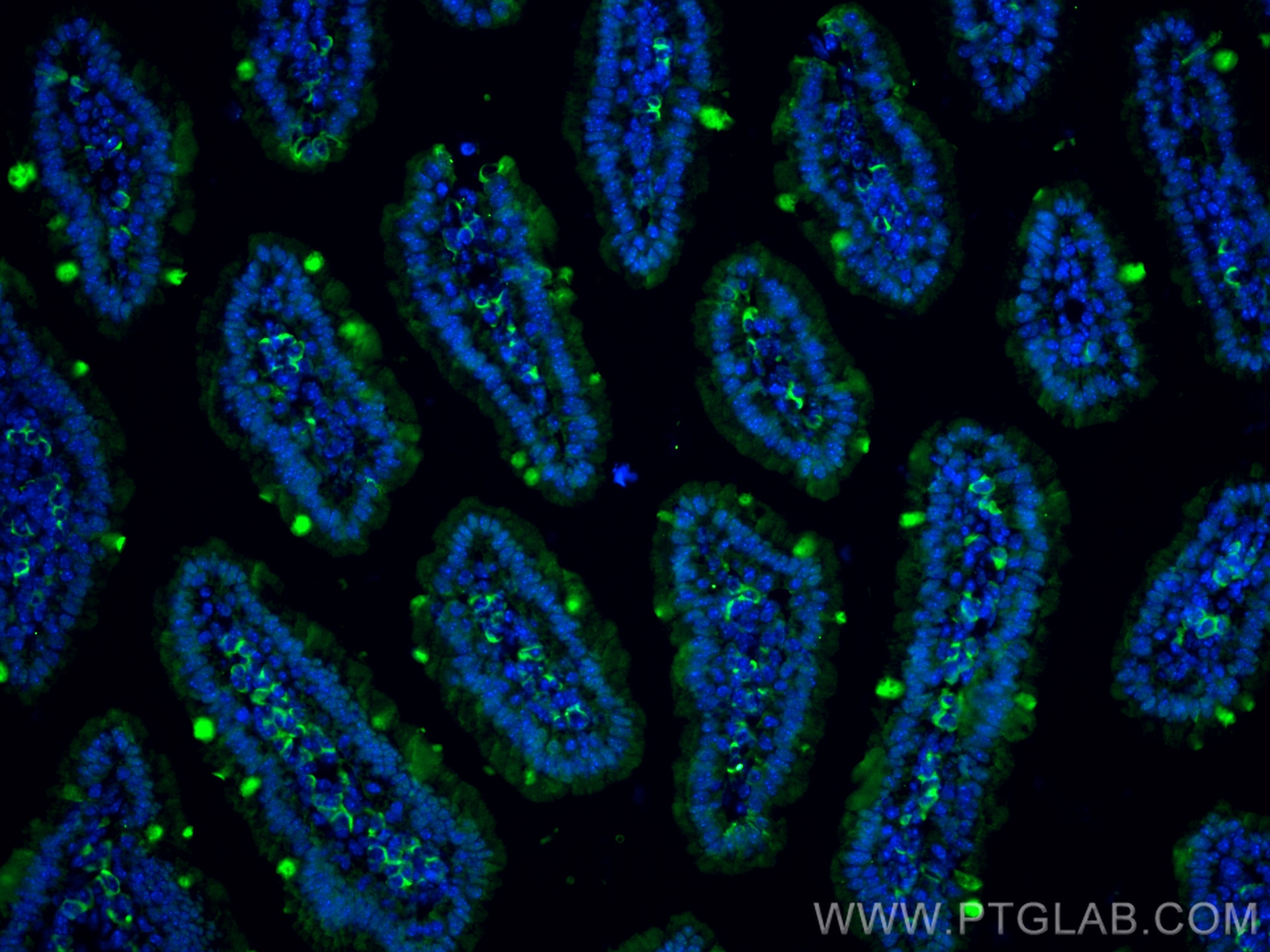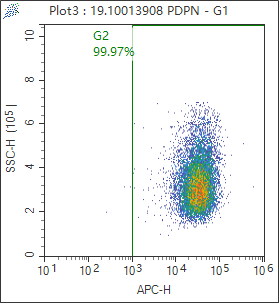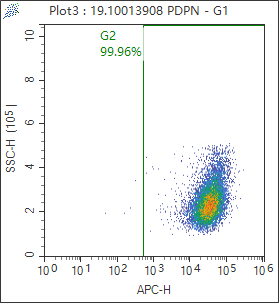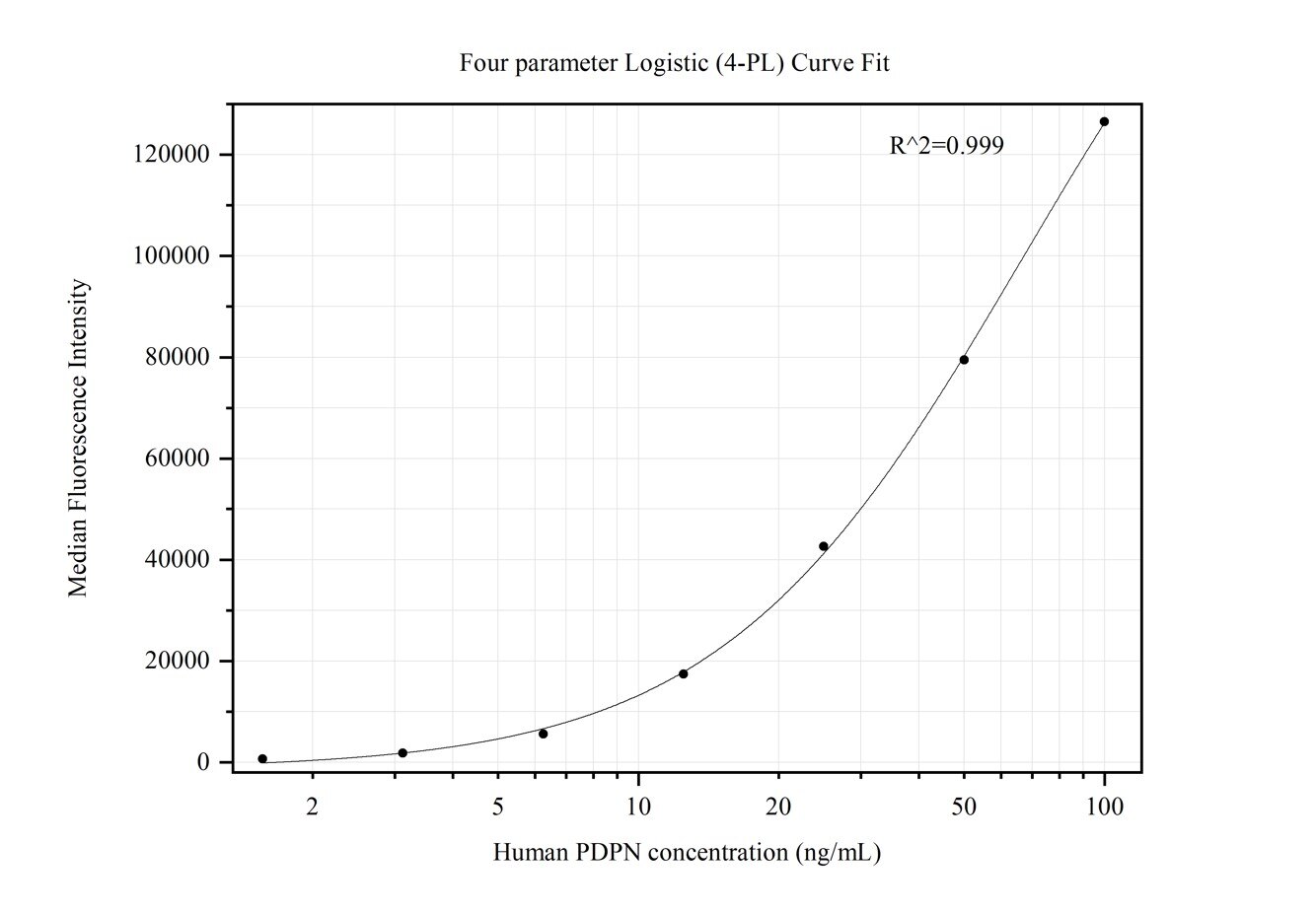Anticorps Monoclonal anti-Podoplanin
Podoplanin Monoclonal Antibody for IHC, IF-P, FC, Cytometric bead array, Indirect ELISA
Hôte / Isotype
Mouse / IgG2a
Réactivité testée
Humain
Applications
IHC, IF-P, FC, Cytometric bead array, Indirect ELISA
Conjugaison
Non conjugué
CloneNo.
1D9F3
N° de cat : 67432-1-PBS
Synonymes
Galerie de données de validation
Informations sur le produit
67432-1-PBS cible Podoplanin dans les applications de IHC, IF-P, FC, Cytometric bead array, Indirect ELISA et montre une réactivité avec des échantillons Humain
| Réactivité | Humain |
| Hôte / Isotype | Mouse / IgG2a |
| Clonalité | Monoclonal |
| Type | Anticorps |
| Immunogène | Podoplanin Protéine recombinante Ag17691 |
| Nom complet | podoplanin |
| Masse moléculaire calculée | 238 aa, 25 kDa |
| Numéro d’acquisition GenBank | BC022812 |
| Symbole du gène | Podoplanin |
| Identification du gène (NCBI) | 10630 |
| Conjugaison | Non conjugué |
| Forme | Liquide |
| Méthode de purification | Purification par protéine A |
| Tampon de stockage | PBS only |
| Conditions de stockage | Store at -80°C. 20ul contiennent 0,1% de BSA. |
Informations générales
Podoplanin was identified as a glycoprotein found in the cell membranes of glomerular epithelial cells (podocyte) (PMID: 9327748). It is a lymphatic marker because the expression of podoplanin has been detected in lymphatic but not blood vascular endothelium, and is useful as the marker of tumor-associated Lymphangiogenesis. Podoplanin has a function in developing testis, most likely at the level of cell-cell interactions among pre-meiotic germ cells and immature Sertoli cells. It may be involved in cell migration and/or actin cytoskeleton organization. When expressed in keratinocytes, PDPN induces changes in cell morphology with transfected cells showing an elongated shape, numerous membrane protrusions, major reorganization of the actin cytoskeleton, increased motility and decreased cell adhesion. It is required for normal lung cell proliferation and alveolus formation at birth. PDPN induces platelet aggregation. It does not have any effect on folic acid or amino acid transport and does not function as a water channel or as a regulator of aquaporin-type water channels. The antibody is specific to Podoplanin.
